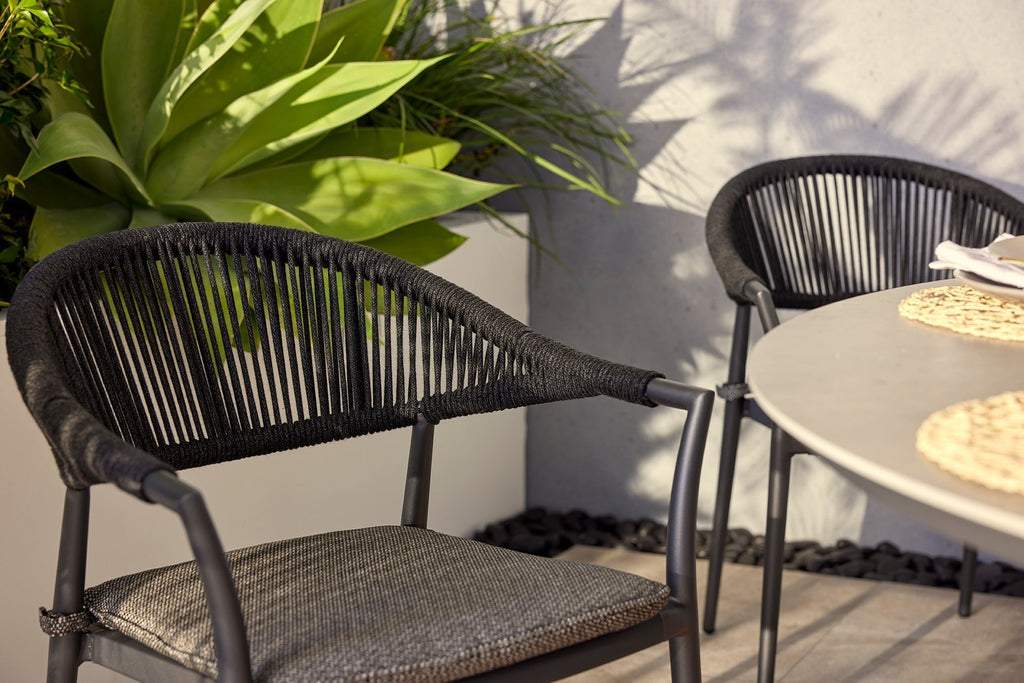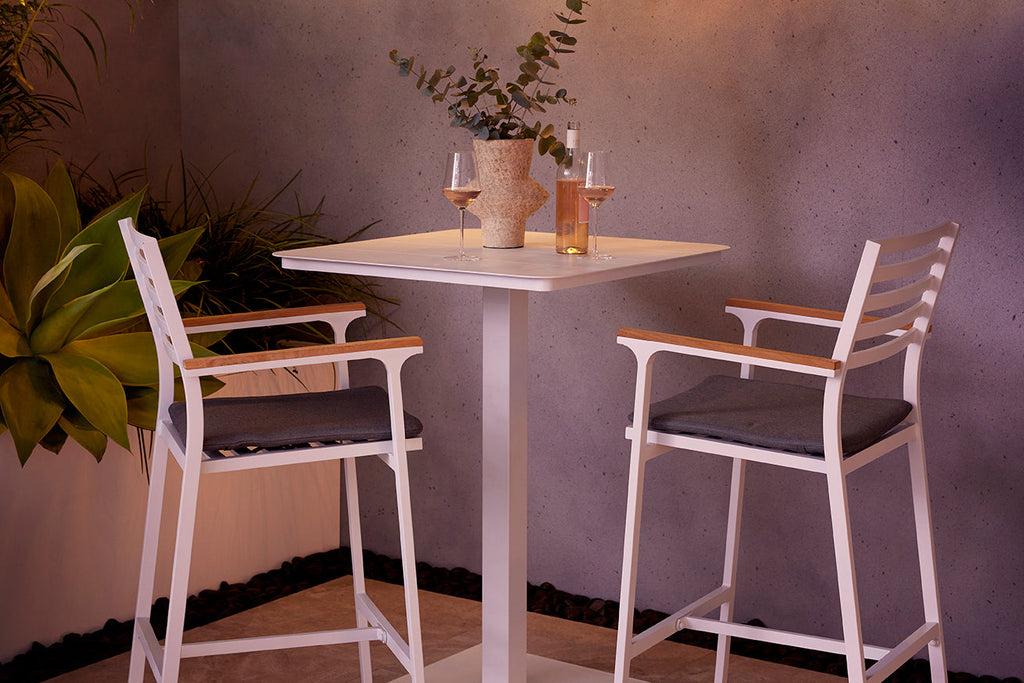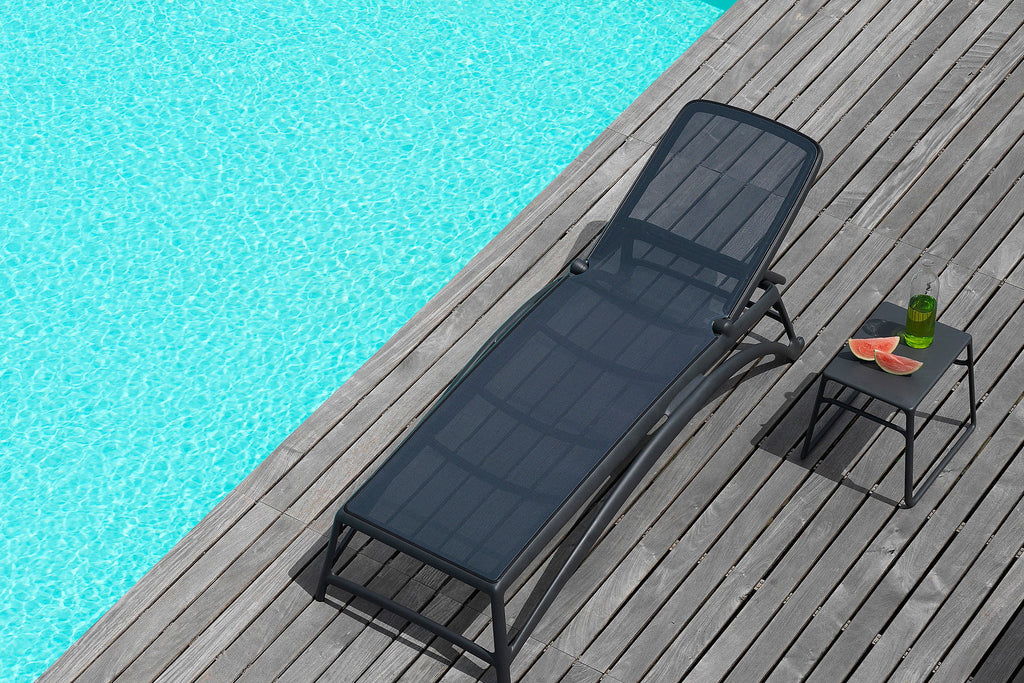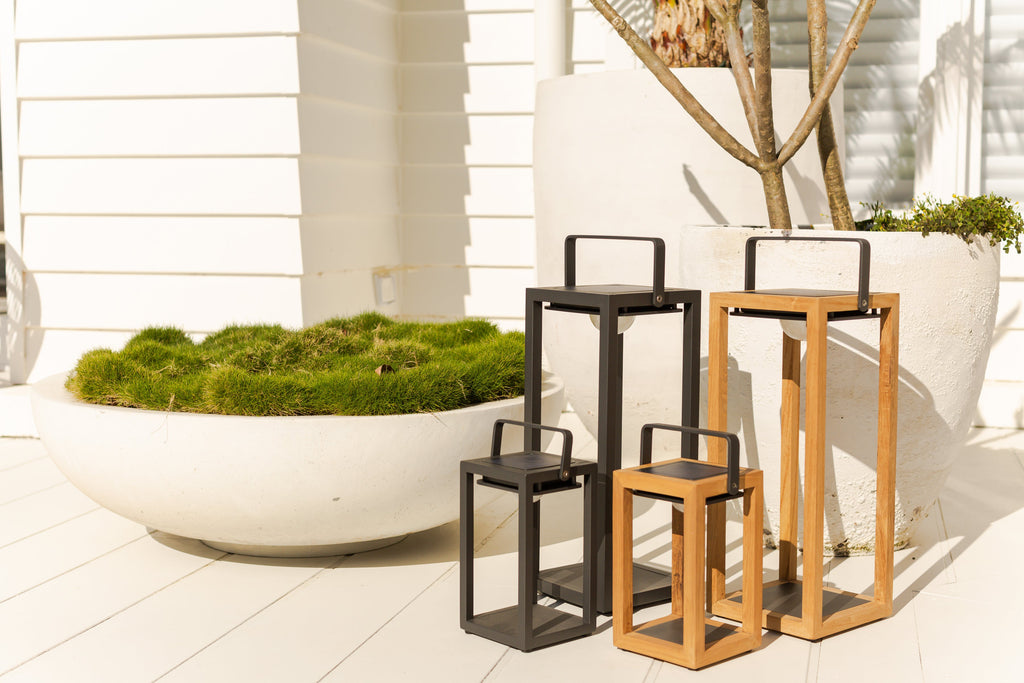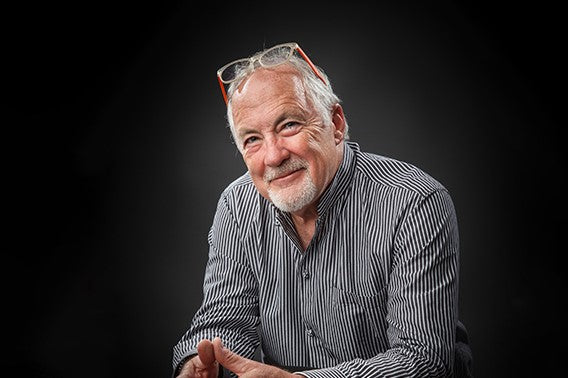4 Incredible Benefits Of A Concrete Outdoor Table
Looking for a stylish new dining table to create a backyard fit for the cover of a magazine? Your search is finally over.
Concrete outdoor tables have seen a major boost in popularity over the last few years as the modern aesthetic graces patios, balconies, and lawns all over the world. Particularly fashionable throughout Europe, Australians like you can snag a piece of the style pie by incorporating meticulously crafted, long-lasting cement top outdoor tables into their yard designs.
Whether you're searching for concrete outdoor coffee tables, dining tables, or side tables, allow us to take you on a veritable adventure through the benefits of this versatile material to cement (no pun intended) your purchase decision. You're about to acquire a brand-new, durable, oh-so-attractive, and low-maintenance member of your furniture family.
A Staple in European Outdoor Space Design
European outdoor spaces often exhibit a variety of styles, but the use of concrete as a primary material for outdoor furniture is particularly notable in the Brutalist and Modernist styles. Let's delve into each:
| European Outdoor Styles | Background | Design Concept |
|---|---|---|
| Brutalist Style | Originated in mid-20th century as part of the modernist movement. Named after the French "béton brut" for "raw concrete," a favored material. | Characterized by massive, monolithic forms and the raw aesthetic of exposed concrete. Emphasizes geometric shapes and repetitive patterns, focusing on functionality and material expression. |
| Modernist Style | Emerged in early 20th century as a response to traditional styles. Embraced new technologies and materials, reflecting the modern age's spirit. | Features sleek concrete contributing to a minimalist aesthetic. Furniture with simple lines, avoiding ornamentation. Focuses on practicality, durability, and material beauty. |
In both styles, concrete is chosen not only for its structural qualities but also for its aesthetic versatility. It can be molded into various shapes and textures, allowing for creative and innovative designs in outdoor furniture and spaces. The use of concrete in these styles reflects a broader architectural and design philosophy that values honesty in materials, structural expressiveness, and a break from traditional forms and ornamentation.
The use of concrete in outdoor spaces and furniture, especially in the Brutalist and Modernist styles, is notably popular in several European countries. However, it's particularly prominent in France and the United Kingdom.
France
- France has a rich history in Modernist architecture, with figures like Le Corbusier being pivotal in the movement. Le Corbusier's use of béton brut (raw concrete) in his designs was foundational in the development of the Brutalist style.
- French urban spaces and public areas often showcase Modernist and Brutalist designs, where concrete is used both for its functional qualities and its aesthetic impact.

United Kingdom
- The United Kingdom saw a significant embrace of Brutalist architecture in the post-World War II era, especially in the 1950s and 1960s. This was partly due to the need for rapid reconstruction and the affordability and practicality of concrete.
- Cities like London, Birmingham, and Manchester feature iconic Brutalist buildings and public spaces. This style has been employed in various public buildings, residential complexes, and even in outdoor furniture and public spaces.
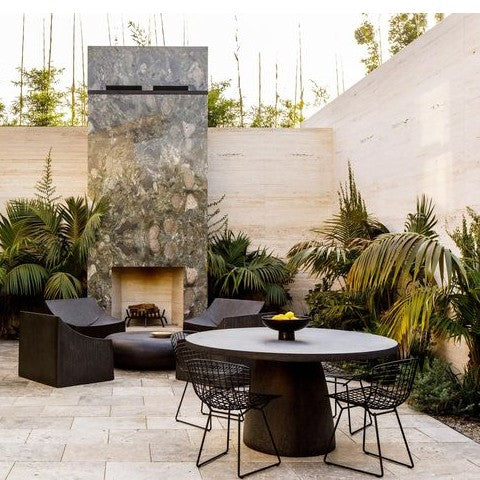
Both of these countries have contributed significantly to the development and popularisation of styles that heavily utilise concrete. Their urban landscapes and architectural history provide a rich tapestry of Brutalist and Modernist designs, reflecting the broader cultural and historical contexts in which these styles evolved.
From the Modernist architecture in France to the United Kingdom's adoration of the Brutalist style, Europeans are well-known for adorning their outside nooks with concrete tables, chairs, statutes, and more. It's even featured across cities, standing strong against the hustle and bustle of life in Paris and London alike.
But it isn't just the material's robustness that inspired the Europeans to utilize it as a primary material; it's also the surprising aesthetic versatility. Perfect for moulding into all sorts of weird and wonderful shapes, concrete affords designers the freedom to be innovative and creative and gives you the chance to acquire a truly unique piece. Your Euro-inspired backyard will undoubtably become the talk of the town for all the right reasons.
The Answer to Durability and Longevity
Tired of buying garden furniture only to replace it after just one or two summers? Concrete is your remedy.
Plastic is cheaper in the short-term, but the cost of annual repurchasing soon adds up. Concrete outdoor tables, however, offer excellent weather-resistance to avoid wasting money long-term.
The main advantages of concrete outdoor tables — durability and longevity under adverse conditions — are partly attributed to its structural properties. As a composite material, it contains several constituents that create a robust material capable of withstanding considerable stress, heat, and moisture. Whatever nature throws at it.
Concrete’s chemical makeup adds to its lifespan. Cement holds the bulk of the material’s chemical elements: silicon, calcium, aluminium, and iron oxides. When mixed with water, it hydrates and forms the rock-esque mass we know as concrete. This process (i.e., a chain of chemical reactions) creates Calcium Hydroxide and Calcium Silicate Hydrate, which contribute to the material’s strength, hardness, and durability.
But there are two types of concrete to choose from — traditional concrete and glass-fibre reinforced concrete (GFRC). Which one is right for you? GFRC. Allow us to explain why.
GFRC can be cast in much thinner sections. Boasting just half the thickness of traditional concrete, it offers a lightweight alternative to its notoriously heavy counterpart. You’ll be able to move our tables without enlisting the help of your entire family.
Moreover, GFRC has an exceptionally high strength-to-weight ratio, with a flexural strength that can reach 4,000 psi. And thanks to the internal reinforcement, there’s no need for extra bolsters that can hinder complex shapes.
Additionally, it’s unaffected by exposure to moisture and UV light due to its structural makeup.
Consider it your lighter and stronger (yet aesthetically identical) alternative to traditional concrete.
|
Traditional Concrete |
GFRC |
|---|---|
|
|
Here at Remarkable Outdoor Living, we use GFRC concrete to give our tables the same luxurious aesthetic as traditional concrete, but without the immovable heaviness. Take our Zen concrete outdoor dining table, for instance, it's guaranteed to make a statement in your yard, while allowing you to move it as and when you please. To ensure it's fully protected from the elements, we add a simple yet effective top seal. It's timeless style and function.
Even the Australian Sun Won't Diminish Your Comfort
If you've ever leant on wrought iron or glass-topped tables after they've sat in the sun for a while, you'll know the pain of a too-hot surface. It certainly isn't a nice surprise and can even leave slight burn marks if you aren't careful.
Concrete tables render this occurrence a mere unpleasant memory. GFRC retains much less heat than glass or iron, thanks to the internal reinforcements provided by the glass fibres. Together, the fibres, aggregates, cement, and polymers in the material ensure it is fire-resistant. Everything, including its heat-reflecting colour, works to keep the material (and you) cool.
Less Maintenance, More Enjoyment
Long-winded maintenance processes stem from materials’ vulnerabilities. But concrete is exceptionally hardy, offering incredible resistance to rain and shine to ensure minimal maintenance — all you need to do is wipe the surface with a soft, dry cloth.
Moreover, its inorganic quality makes it inedible to insects, so you can say goodbye to pest damage.
You won’t even need to worry about fixing cracks. Concrete has fairly low thermal expansion/contraction characteristics, ensuring it’s less prone to cracking.
Whether you opt for the square Zen Concrete Outdoor Table or the stadium Bristol Outdoor Concrete Dining Table (currently unavailable), you’ll be able to relax and enjoy it without conducting arduous maintenance routines.
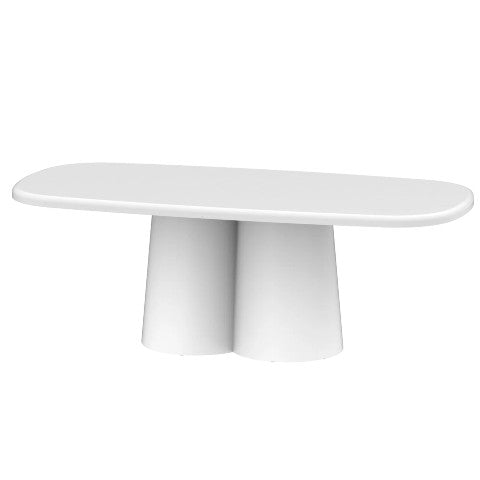
Product image of our Bristol Outdoor Concrete Dining Table 216cm in White (currently unavailable)
Versatility at its Finest
"Grey" and "boring" may be two terms that spring to mind upon hearing the word "concrete," but our Zen Outdoor Concrete Round Dining Table is proof this material boasts aesthetic appeal; it isn't just a utilitarian choice.
Concrete has been used in European architecture and design for centuries, thanks to its versatility. GFRC is particularly flexible and malleable, making it perfect for crafting both basic and complex shapes. Unlike other materials, it can be moulded to create any texture or shape to give your outdoor space a unique touch.
The versatility even extends to the finishes. Switch up the colour to suit your style, breathing fresh life into your outdoor space.
The Concrete Outdoor Table: Your Yard's Best Asset
Concrete has been used in European architecture and design for centuries — and for good reason. The material is low maintenance, heat-resistant, durable, long-lasting, and offers exceptional aesthetic versatility.
Our GFRC collection promises to be the last set of garden furniture you purchase. See the beauty in person at our showroom or peruse the range online to turn your Australian yard into a European low-maintenance, non-fading, weather-resistant retreat.
FAQ
1. Do concrete tables chip easily?
They don’t chip easily, but they aren’t immune to slight cracks on exposed edges when impacted with hard objects. General use will not cause chips.
2. Do outdoor concrete tables crack easily?
Traditional concrete can develop hairline cracks over time. Although they're easily repairable with filler, you can eliminate the possibility of cracks by choosing GFRC outdoor tables.
3. How heavy are concrete tables?
This depends on the table. For instance, our four-seater Zen Outdoor Concrete Round Dining Table is 52kg, while our square Zen Concrete Table featuring stainless steel legs is 104kg.
4. Can you put hot plates on concrete tables?
Outdoor concrete tables can withstand high temperatures. However, to guarantee you don't discolour or damage the top seal, we recommend using placemats for extremely hot plates or mugs.
Reference Sources
- https://thesuncrete.com.au/glass-fiber-reinforced-concrete-grc-vs-traditional-concrete/ https://www.trueformconcrete.com/blogs/news/why-grfc-in-concrete-furniture-is-a-must https://americanfyredesigns.com/gfrc/
- https://www.concretecentre.com/Performance-Sustainability/Fire-Resistance.aspx
- https://americanfyredesigns.com/gfrc/
- https://www.concretenetwork.com/glass-fiber-reinforced-concrete/benefits.html
- https://technologyinarchitecture.wordpress.com/2018/05/22/glass-fiber-reinforced-concrete-gfrc/
- https://www.sorba.com/glass-fibre-reinforced-concrete
- https://www.remarkablefurniture.com.au/blogs/maintenance/concrete

